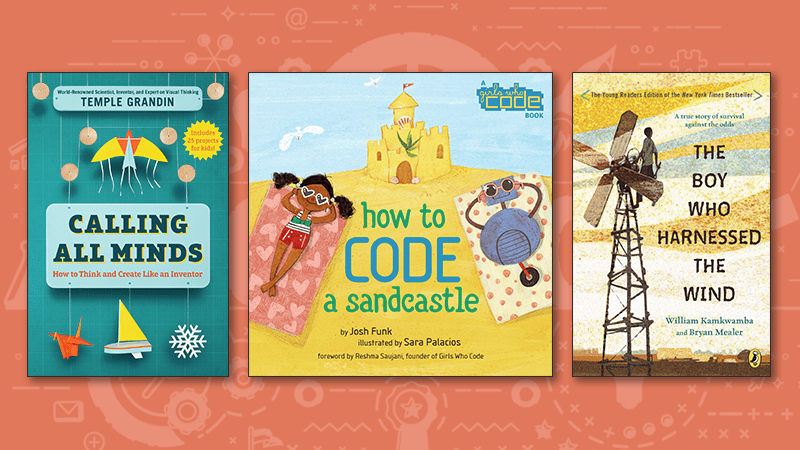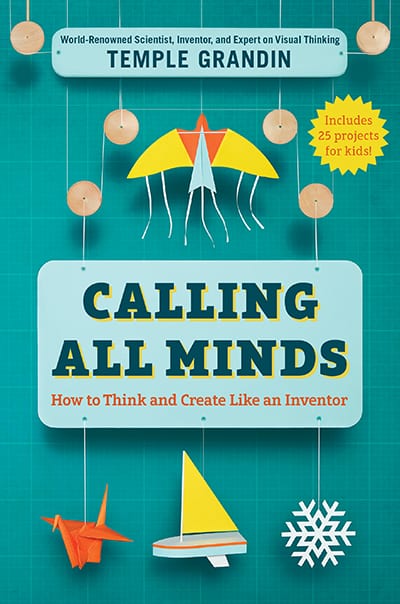STEM books are finally getting a chance to shine in schools as educators increasingly shift their focus towards incorporating more science, technology, engineering, and math into their classrooms. The biggest challenge is deciding which STEM books to include in classroom and school libraries.
An educator asked our WeAreTeachers HELPLINE for advice about adding STEM books to her school’s library collection. She wrote, “I am a K–8 librarian media specialist. This is my second year on the job, and I’m trying to update large sections of our school library. Our collection of nonfiction books is sorely lacking. Some of the books are 20 years older than me! Are there any STEM-related books that our library must have? I’d love any suggestions! Thanks so much!”
With a little help from the educators in our WeAreTeachers Facebook group and our friends at Penguin Young Readers, we put together an extensive list of 50 modern STEM-themed books that your classroom or school library simply shouldn’t do without. Plus get a printable STEM book list that organizes many of these titles (plus more!) by specific theme (science, technology, engineering, or math) and recommended grade level—a great resource for building your classroom or school library!

1. Amazing Visual Math by DK Publishing
This clever book makes math a hands-on learning experience. It also features flaps, windows, and pop-ups that explain basic math concepts. Students will learn about shapes, time, measurement, and much more.
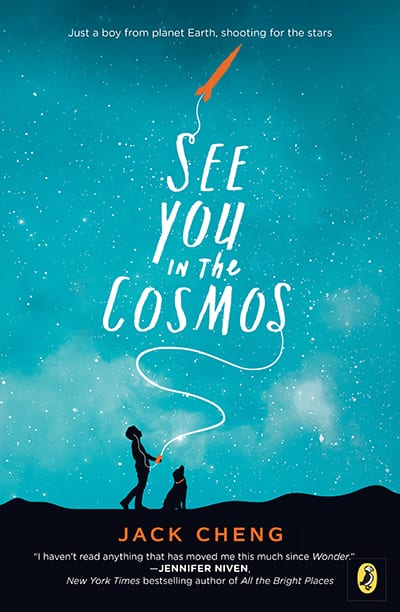
2. See You in the Cosmos by Jack Cheng
There aren’t many novels that are able to mix fiction and STEM as seamlessly as this one does. Additionally, it caters to the attention span of middle-grade readers, which isn’t always easy to do. Centering on a young space-obsessed boy, Alex, and his dog, Carl Sagan, See You in the Cosmos is heartwarming, optimistic, and great for a light STEM-learning read.

3. Girls Who Code: Learn to Code and Change the World by Reshma Saujani
You may know about the Girls Who Code movement already, but if you haven’t incorporated the book that started it all into your library, you need to. Filled with beautiful graphics, inspiring success stories of women in technology, and coding lessons, Girls Who Code has something for everyone. Many young girls are intimidated by the idea of learning to code, but this book brings coding skills alive in such an approachable way that your students may just find themselves learning as they read.
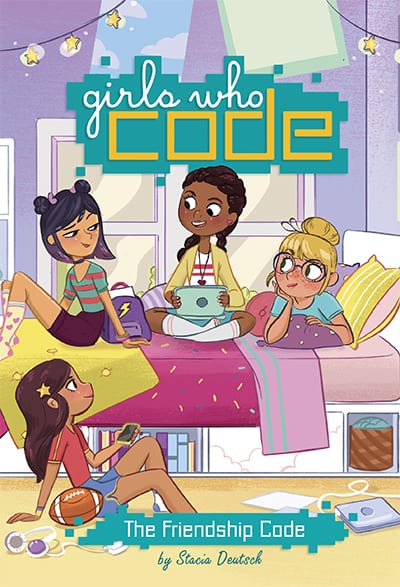
4. Girls Who Code: The Friendship Code #1 by Stacia Deutsch and Reshma Saujani
Ever look back with nostalgia on those long days spent curled up with a Babysitter’s Club book? Well, never fear! The Friendship Code is reminiscent of the classic series and mixes in a little bit of coding. Make sure your students have access to this one.
5. Eye to Eye: How Animals See the World by Steve Jenkins
Caldecott Honor–winning author-illustrator Steve Jenkins creates beautiful torn and cut paper illustrations to explain the evolution of the eye. Students will learn how important the eye is to the survival of many species.
6. Smithsonian Ocean: Our Water, Our World by Deborah Cramer
This gorgeous book explores the origin and beauty of the world’s oceans. It also raises our awareness of the important partnership we have with the these vital bodies of water.
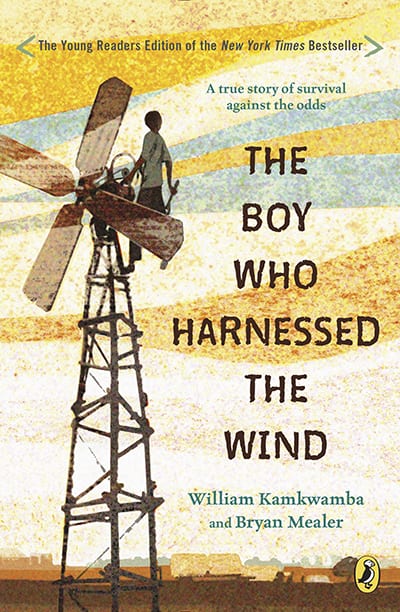
7. The Boy Who Harnessed the Wind by William Kamkwamba and Bryan Mealer
In this memoir, William Kamkwamba reflects on how he saved his Malawian village as a boy by building a windmill and bringing electricity to the community. Eloquently adapted for young readers, this story will not only help them realize how important electricity is for our society, but it will also inspire them to think outside the box during their daily lives.
8. Atoms Under the Floorboards: The Surprising Science Hidden in Your Home by Chris Woodford
Packed with fun facts, this book is an exploration of the science behind the objects and processes of everyday life.
9. If: A Mind-Bending New Way of Looking at Big Ideas and Numbers by David J. Smith
This “fact-filled, knock-your-socks-off” book takes huge numbers and ideas and turns them into things that can be grouped and counted. It’s perfect for scale and measurement studies. It also includes suggestions for classroom projects.
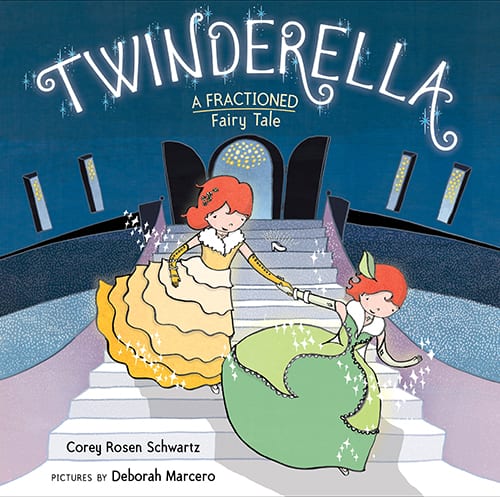
10. Twinderella, A Fractioned Fairy Tale by Corey Rosen Schwartz
This book is a great choice for younger kids. Introduce them to problem-solving techniques they will use throughout their lives by reading them this charming fractioned fairy tale. What if Cinderella actually had a twin sister the whole time?

11. Warcross by Marie Lu
Talk about a YA novel you won’t be able to put down! Warcross is an award-winning book about a teenage hacker who accidentally immerses herself in the sinister world behind one of the world’s most popular video games. This one will keep your students interested and teach them a few things about STEM.
12. Manfish: A Story of Jacques Cousteau by Jennifer Berne
Jacques Cousteau fell in love with the ocean as a boy and grew up to become a champion of the seas. One of the best-known oceanographers in the world, this beautifully illustrated biography tells Cousteau’s story. Students will learn to love the water as much as Cousteau did.
13. Calling All Minds: How to Think and Create Like an Inventor by Temple Grandin
Renowned creator Temple Grandin shares stories, inventions, and facts in this book that is sure to inspire. In fact, it may be just the inspiration your classroom’s aspiring inventors need to get their creative juices flowing.
14. Wildlife of the World by DK Publishing
This gorgeous book explores animal habitats in various regions of the world. Filled with wonderful photographs and interesting facts, this is a book kids will not want to put down.

15. How to Code a Sandcastle by Josh Funk
Filled with bright colors and light humor, How to Code a Sandcastle is the perfect way to introduce kids in younger grades to coding concepts. It is simple, easy to follow, and will certainly keep young audiences entertained and engaged.
16. Mesmerized: How Ben Franklin Solved a Mystery that Baffled All of France by Mara Rockliff
Using logic and reason, Benjamin Franklin tries to disprove the “miracle cure” powers of a French doctor. This engaging story, with its entertaining illustrations, is a great introduction to the scientific method.
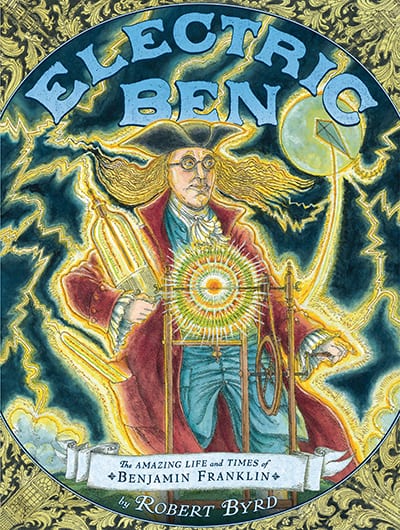
17. Electric Ben: The Amazing Life and Times of Benjamin Franklin by Robert Byrd
You can never have enough Ben Franklin! Filled with gorgeous illustrations detailing Ben Franklin’s life and accomplishments, this book will awaken the inventor within your young listeners.
18. Rosie Revere Engineer by Andrea Beaty
Rosie dreams of becoming a famous engineer, a “brilliant inventor of gizmos and gadgets.” She sets out to create a flying machine for her aunt but encounters stumbling blocks along the way. A wonderful story of creativity and perseverance.
19. Knowledge Encyclopedia by DK Publishing
This reference book is filled with interesting facts, maps, and 3-D rendered graphics. The chapters are detailed and show an intimate look at Earth, space, nature, and so much more.

20. Earn It! by Cinders McLeod
Introduce your pre-K to K class to the concept of earning success with this adorable picture book. Its main character is an adorable bunny who just wants to be a famous singer but soon realizes that achieving her dreams is going to take a little patience and perseverance.
21. The Way Things Work Now by David MacCauley
“Everything a machine does is in accordance with a set of principles or scientific laws.” So begins the introduction of David MacCauley’s latest visual guide to the world of machines.

22. How to Build a Museum: Smithsonian’s National Museum of African American History and Culture by Tonya Bolden
The NMAAHC is the latest museum to be built on the National Mall, and getting to that point was far from easy. Explore the fascinating process behind the museum and experience its story—the story of all those educators, activists, politicians, curators, and so many more who fought for this moment for a long time. It’ll be one nonfiction book your class won’t be able to get enough of!
23. Illustrated Elementary Science Dictionary by Usborne Publishing
This fact-filled reference book explains basic scientific principles in a clear, no-frills way. This book is great for laying a foundation of scientific learning. Visual learners, especially, will enjoy this title.
24. Illustrated Elementary Math Dictionary by Usborne Publishing
Also from Usborne, this reference book explores mathematical concepts in the same manner as the scientific dictionary above.
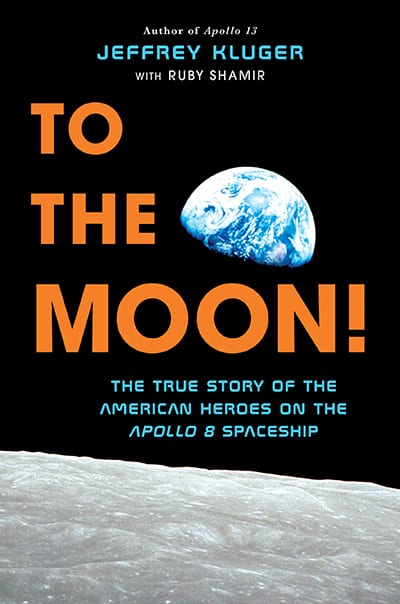
25. To the Moon!: The True Story of the American Heroes on the Apollo 8 Spaceship by Jeffrey Kluger and Ruby Shamir
This suspenseful and awe-inspiring book revolves around the Apollo 8 mission to the moon. Keep this fun book in your classroom to remind your students that they should shoot for the moon—because they might just make it there.
26. On a Beam of Light: A Story of Albert Einstein by Jennifer Berne
This whimsically illustrated book explores the early life of the brilliant scientist Albert Einstein. With quiet observation and unmatched imagination, Einstein’s remarkable ideas changed the way scientists think.

27. I Am Jane Goodall (Ordinary People Change the World) by Brad Meltzer
Appropriate for a wide age range, this biography is vivacious and fun to read. More importantly, it will teach readers to think about the impact of their actions on the world and the importance of passion.
28. Star Stuff: Carl Sagan and the Mysteries of the Cosmos by Stephanie Roth Sisson
This story shows how accomplished scientist Carl Sagan went from a curious boy to a famous astronomer and author. With charming illustrations, this book “introduces the beloved man who brought the mystery of the cosmos into homes across America to a new generation of dreamers and star gazers.”
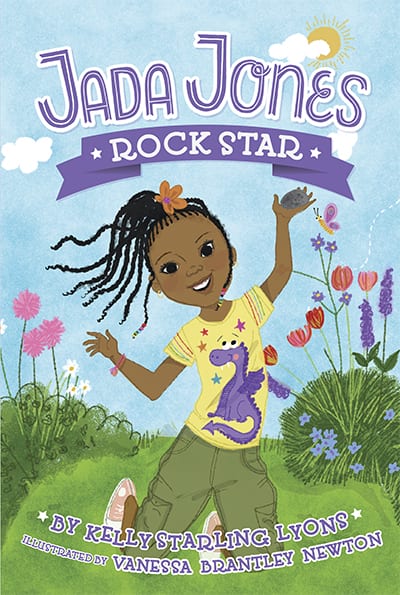
29. Jada Jones: Rock Star #1 by Kelly Starling Lyons
Contrary to what the title might lead you to believe, this easy-to-read chapter book is actually about rock science. Let your students join Jada Jones as she navigates through mineral research and making new friends.
30. How to Be a Math Genius: Your Brilliant Brain and How to Train It by Mike Goldsmith
Most kids don’t realize that they use math all the time. This clever guide explores the “math brain” and features a host of math facts, activities, and puzzles.
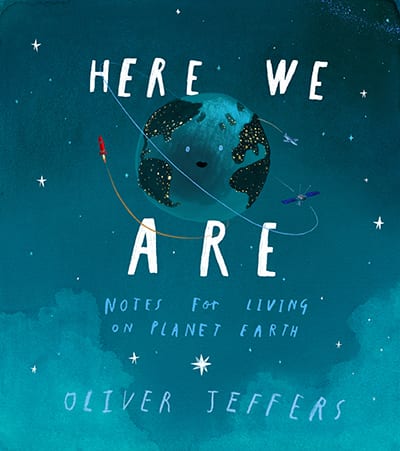
31. Here We Are: Notes for Living on Planet Earth by Oliver Jeffers
Here We Are is a poignant tale on what it means to be a human living on Earth and teaches readers valuable lessons about acceptance. Do your students a favor and read them this touching tale; it will transform the way they see themselves and their world.
32. The Kids’ Book of Simple Machines: Cool Projects and Activities That Make Science Fun by Kelly Doudna
Kids will love learning about six simple machines and how they make our life easier. Full of projects and activities, this is THE book for junior engineers and scientists.

33. Girling Up! by Mayim Bialik
Mayim Bialik, of The Big Bang Theory, explores the science and emotion behind growing up in this must-read for teenage girls. We all know growing up isn’t easy, but maybe this book will make it just a little less difficult for older students.
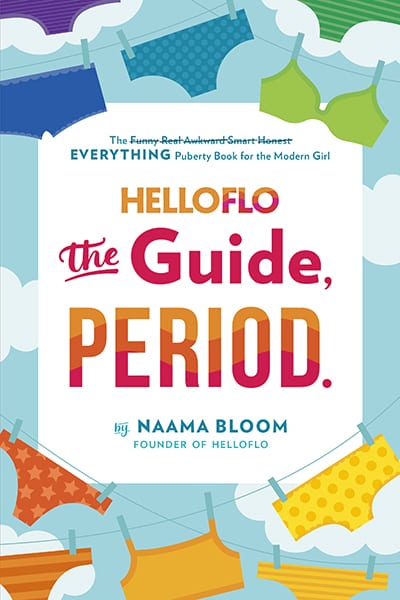
34. HelloFlo: The Guide, Period. by Naama Bloom
What makes HelloFlo the best puberty book for the modern girl? It’s honest, unapologetically messy, and empowering all at the same time. Don’t let your girls grow up without this book.
35. Women in Science by Rachel Ignotofsky
Inspiring tales of 50 distinguished scientific minds—all of whom are women. Learn about trailblazers such as scientist Marie Curie, ecologist Rachel Carson, and astronaut Mae Jemison.

36. Felix Yz by Lisa Bunker
Felix Yz was accidentally fused with a fourth-dimensional being at the age of three. This book details the days leading up to the separation surgery he must undergo years later, and it will have readers on the edge of their seats!
37. Electrical Wizard: How Nikola Tesla Lit up the World by Elizabeth Rusch
A wonderful biography of Nikola Tesla, a pioneer of modern electrical engineering and a contemporary of Thomas Edison. Students will be inspired by his genius, tenacity, and imagination
38. STEM Starter for Kids Technology Activity Book by Catherine Bruzzone
Filled with clear explanations, facts, and illustrated activities, this book is full of discoveries that will infect kids with the technology bug.
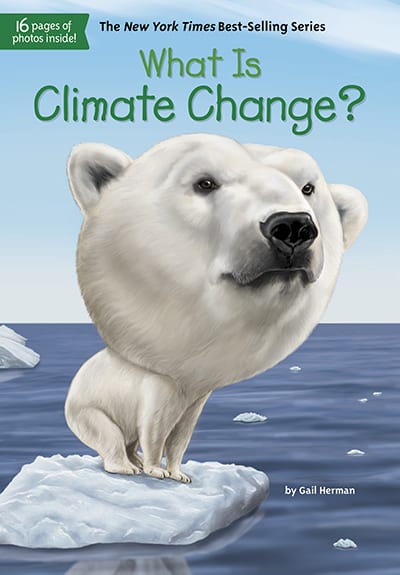
39. What Is Climate Change? by Gail Herman and Who HQ
Help younger grades wrap their heads around the issue of “global warming.” What is it? What can they do to help fix it?
40. Big Questions from Little People: And Simple Answers from Great Minds by Gemma Elwin Harris
The title of this one says it all. This is a great guidebook for all curious kids and also unsure adults who may not have all the answers.
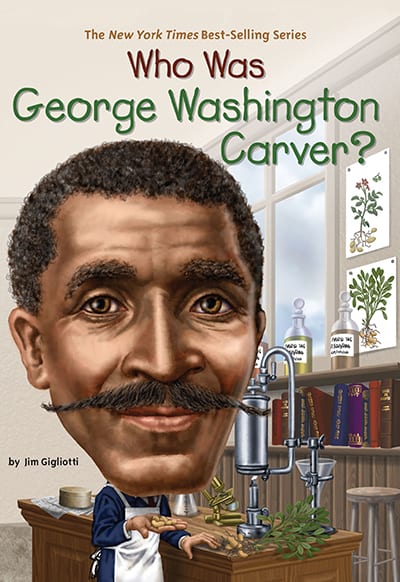
41. Who Was George Washington Carver? by Jim Gigliotti and Who HQ
George Washington Carver’s mind-boggling success in the agricultural world is definitely worth reading about. Make sure this great man’s name is one heard frequently in your classroom.
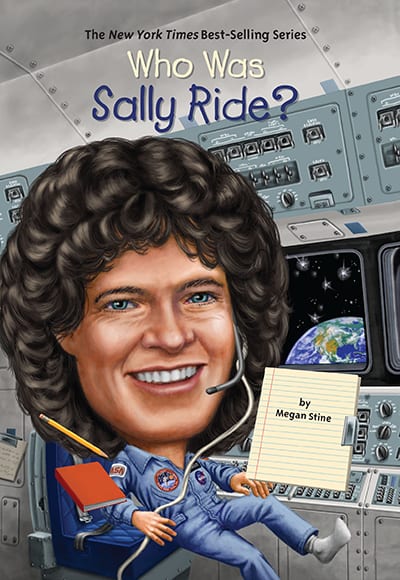
42. Who Was Sally Ride? by Megan Stine and Who HQ
Sally Ride, a four-time graduate of Stanford University and the first American woman to fly in space, was truly a remarkable woman. Even after her success as an astronaut, she worked hard to make science accessible for girls everywhere—so make sure she’s accessible to the girls in your classroom!

43. Where Is Our Solar System? by Stephanie Sabol and Who HQ
Make sure your students know everything about the solar system with this engaging book. They’ll use it to learn facts, debunk fiction, and discover the history behind humanity’s current understanding of astronomy.
44. Baby Animals (Animal Planet Animal Bites) by Dorothea DePrisco
Young readers love books about baby animals. This collection features adorable photographs and interesting facts about animal behavior, family relationships, and more.
45. Maker Lab: 28 Super Cool Projects by Jack Challoner
Makerspaces are the hot new topic in STEM education. This guide gives students plenty of options for “super cool projects.” Students can make things like a Popsicle stick DNA strand or a paper cup wind catcher. They can also learn to make the ever-popular sticky slime.

46. Math Curse by Jon Scieszka
This vivid and humorous story will help your students clearly see the shape math takes in their daily lives. Maybe they’ll even stop asking that dreaded question, “But what do we really need math for?” A teacher can dream!
47. National Geographic Everything series
National Geographic has a long list of STEM titles. Their popular Everything series tackles topics such as weather, rocks and minerals, and much more.

48. From Here to There: The Story of How We Transport Ourselves and Everything Else by HP Newquist
From camels to cars, humans have always been off to somewhere or another using some special mode of transportation. This book offers an exploration of transportation methods from long ago into the near future. From Here to There will answer questions about how we move that your students never even knew they had.
49. Sally Ride Science Series: Cool Careers in STEM
An amazing book series from Sally Ride Science at the University of California, San Diego. There are also other series, including Our Changing Climate, Key Concepts in Science, and Inside Story of Our Solar System. Be sure to also check out the STEM-related resources, discussions, and events.
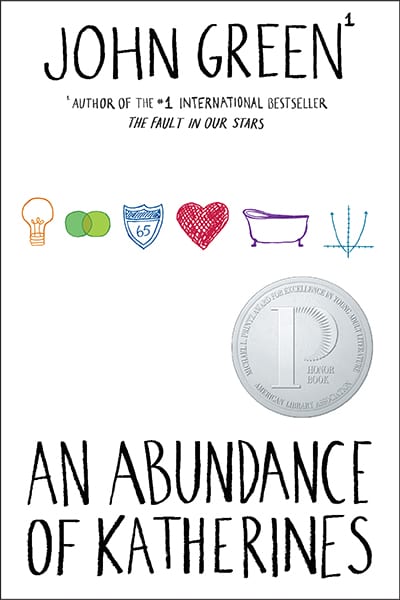
50. An Abundance of Katherines by John Green
One of John Green’s lesser-known masterpieces, An Abundance of Katherines is a book filled with heart and soul—but don’t be fooled! It’s also a great “undercover” STEM read, chock-full of anagrams and theorems. Though centered on a child prodigy, your students don’t need to be prodigies to read it. Even better, it’s a read that they will certainly get something out of.
BONUS: Get a printable STEM book list that organizes STEM titles by specific theme (science, technology, engineering, or math) and recommended grade level. A great resource for building your classroom or school library!


